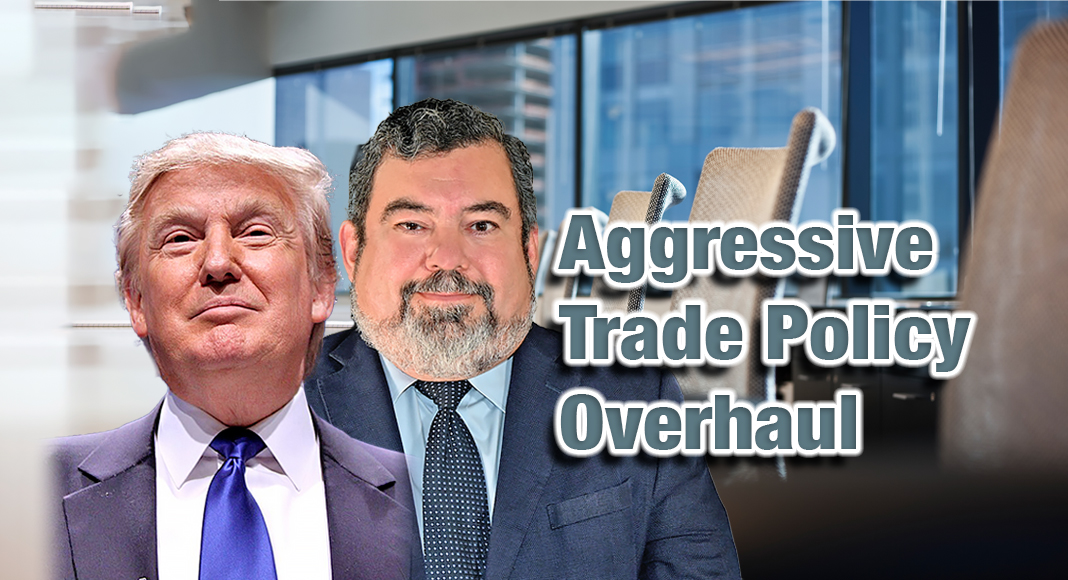
Texas Border Business
Texas Border Business
Washington, D.C. — January 20, 2025–President Donald Trump has reignited his administration’s hallmark “America First” Trade Policy, signing a memorandum today that outlines sweeping measures to prioritize domestic industry, address trade imbalances, and fortify national security. The directive lays the groundwork for a comprehensive overhaul of U.S. trade practices, targeting unfair foreign competition and realigning trade agreements to better serve American interests.
This new strategy includes significant actions to combat trade deficits, crack down on currency manipulation, and strengthen export controls. However, the memorandum’s focus on the United States-Mexico-Canada Agreement (USMCA) raises questions about how these changes might impact economic relations with Mexico and its role as a key trading partner.
The memorandum tasks various federal agencies with delivering specific recommendations and policy actions by April 2025. Some of the most notable initiatives include:
- Addressing Trade Deficits: The Secretary of Commerce will investigate the causes of large trade deficits, proposing global tariffs to rectify economic imbalances.
- USMCA Review: A public consultation process will assess the impact of the USMCA on American workers, farmers, and businesses. Recommendations regarding U.S. participation in the agreement will follow, with the potential for renegotiations ahead of the agreement’s July 2026 review.
- Combatting Counterfeits and Drug Imports: Special attention will be given to the flow of fentanyl and counterfeit goods across U.S. borders, including those originating from or passing through Mexico.
- Industrial Security: A review of U.S. manufacturing vulnerabilities will inform new policies to safeguard domestic industries from reliance on imports.
Implications for Mexico
Mexico, one of the United States’ largest trading partners, could face significant economic challenges under the revised trade policy. The focus on revisiting the USMCA, particularly its impact on American workers and industries, raises the threat of tighter restrictions or renegotiated terms that could disadvantage Mexico’s export-driven economy.
1. USMCA Reassessment
Mexico relies heavily on its trade relationship with the U.S., with more than 80% of its exports heading north of the border. A reassessment of the agreement could lead to increased tariffs, stricter labor requirements, or other policy adjustments that disrupt this flow. These changes may affect key industries such as automotive manufacturing and agriculture.
Jorge Torres, President and CEO of Interlink Trade Services warns that the reassessment poses serious risks:
“There is the possibility of the U.S. getting out of the agreement, which will put Mexican and Canadian goods paying the general duty under the Most Favored Nation (MFN) rate. The U.S. will likely want restrictions in the agreement for Chinese investment, particularly in the automotive industry.”
2. Fentanyl Crackdown
The administration’s focus on halting the flow of fentanyl and counterfeit goods through Mexico could lead to heightened scrutiny at border crossings. This may slow trade operations and increase compliance costs for Mexican exporters.
Torres highlights the challenges posed by such measures:
“We can see an increase in shipment inspections at the border, increasing operational costs and creating delays. To mitigate this, better technology will have to be implemented.”
3. Potential Tariffs
If the U.S. finds Mexico’s trade practices to be unfairly advantageous or non-compliant with the terms of the USMCA, new tariffs could be imposed on Mexican goods. Industries such as steel, electronics, and agriculture are particularly vulnerable to such measures.
Torres notes the broader economic consequences of such actions:
“Potential tariffs will create an inflationary effect in the U.S. and possibly a trade war with Mexico and Canada because they might impose retaliatory tariffs on U.S. products.”
4. Immigration and Trade Nexus
The memorandum ties immigration issues to trade policy, suggesting that unlawful migration flows from Mexico could justify economic or trade-related penalties. This connection could further strain bilateral relations and complicate cross-border cooperation.
Diplomatic and Economic Challenges
The policy’s direct emphasis on renegotiating trade agreements and addressing unfair practices will likely create tension between the U.S. and Mexico. Mexican officials may resist attempts to alter the USMCA, arguing that the agreement has been a mutual success. Additionally, increased tariffs or stricter border controls could exacerbate supply chain disruptions, impacting businesses on both sides of the border.
Diplomatically, these measures may strain relations between the two countries, particularly if Mexico perceives the policy as unilateral or overly punitive. Mexican industries that rely on integrated supply chains with U.S. companies may face higher costs and logistical hurdles, challenging Mexico’s competitive edge in global markets.
With federal agencies set to report their findings and recommendations by April 2025, the coming months will determine the extent of changes to U.S.-Mexico trade relations. President Trump’s directive emphasizes a commitment to reshaping the U.S. trade landscape, but it also raises questions about the more significant implications for key partners like Mexico.
As the U.S. doubles down on its “America First” strategy, the next phase of U.S.-Mexico economic relations hangs in the balance.












